Nissan e-Power hybrid technology could advance toward electric vehicles in the United States

Since launching its e-Power series hybrid system seven years ago, Nissan has refined the technology and used it as a path to an all-electric future for the brand.
However, there is not yet a single US market model with this technology. Why the delay?
Partly it’s because Nissan has focused its hybrid vehicles on other markets. In Europe, where Nissan plans to switch completely to electric vehicles From 2030 onwards, the technology will be advanced rapidly and there will be very strong demand for e-power models. Earlier this year, Nissan expected electrified models to make up 55% of the global mix by 2030; Now Nissan is on track to reach that percentage five years early.
Ivan Espinosa, head of product strategy and product planning at Nissan, said in a question-and-answer session at the Tokyo auto show last week that the market response for these vehicles has been fantastic, calling e-Power one of Nissan’s “fundamental signature technologies.” .
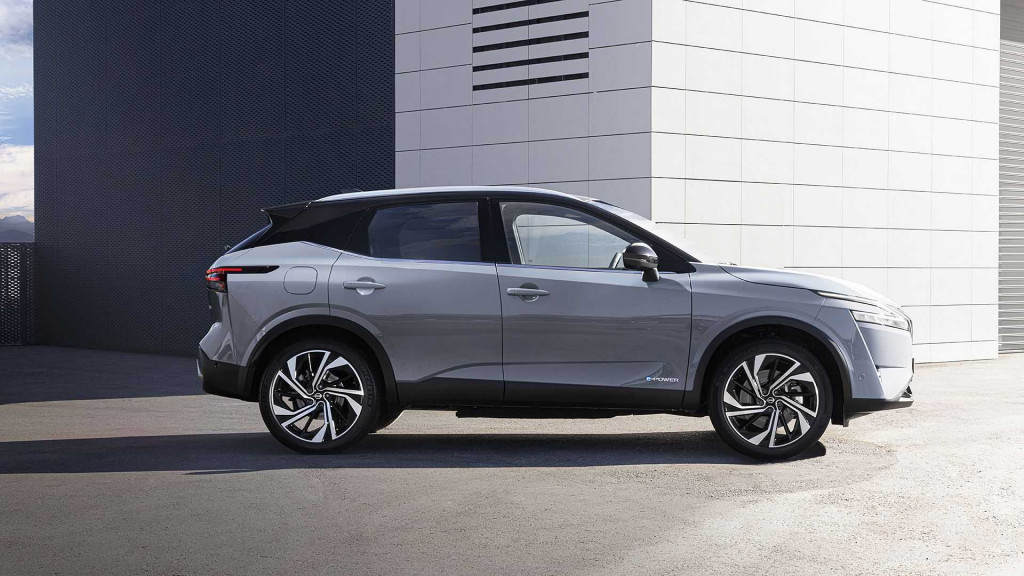
2022 Nissan Qashqai E-Power
How will e-power hybrids find their way into the USA?
In the session, Espinosa and global product planning director Pierre Loing explained some of the reasons why the U.S. hasn’t seen e-power yet and offered some hints about how it might make sense for a popular American product – trucks.
Loing argued that towing requirements make all-electric trucks challenging. And while E-Power sounds like a great way to electrify trucks without range anxiety, the technology simply isn’t ready for installation in trucks yet, he explained.
“The architecture … is not truck architecture,” Loing said of e-Power. “It’s a transversely mounted engine.”
E-Power is a serial hybrid system, meaning the engine is not physically connected to the wheels and there is no traditional transmission. It is effectively an electric vehicle with a very small battery pack and a gasoline-powered engine on board that functions solely as a generator when needed.
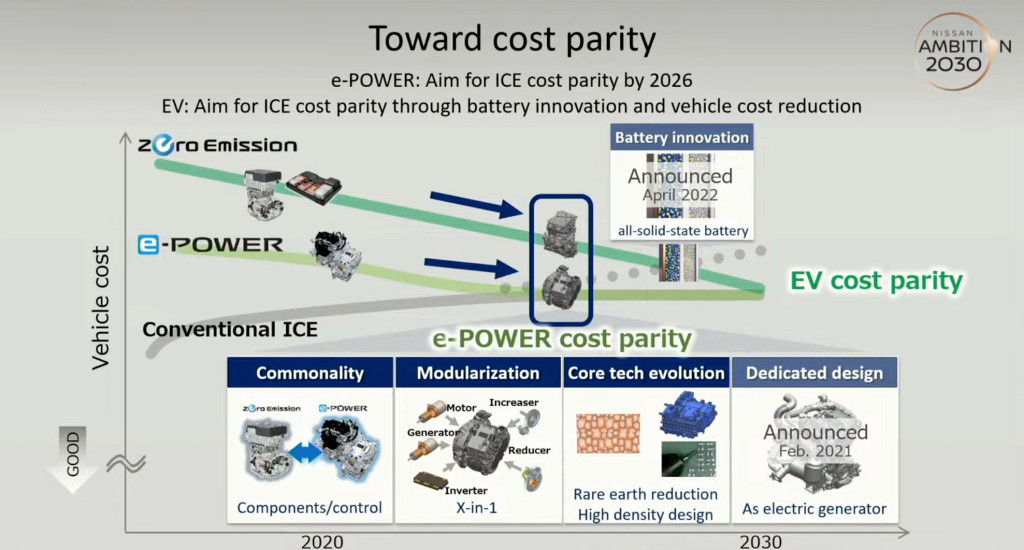
Nissan is aiming for cost parity with electric vehicles and e-power hybrids
However, Nissan sees this as an important accompanying technology to reduce the cost of electric vehicles. One was introduced earlier this year modular electrified drive Approach to ensure that its electric vehicles and e-power models have some of the same components – in order to achieve price parity between e-power and non-hybrid ICE models by 2026.
Nissan is reportedly already in the process of adapting e-Power to future body-on-frame trucks. Loing declined to confirm this, suggesting the automaker simply doesn’t have a clear path it wants to announce yet.
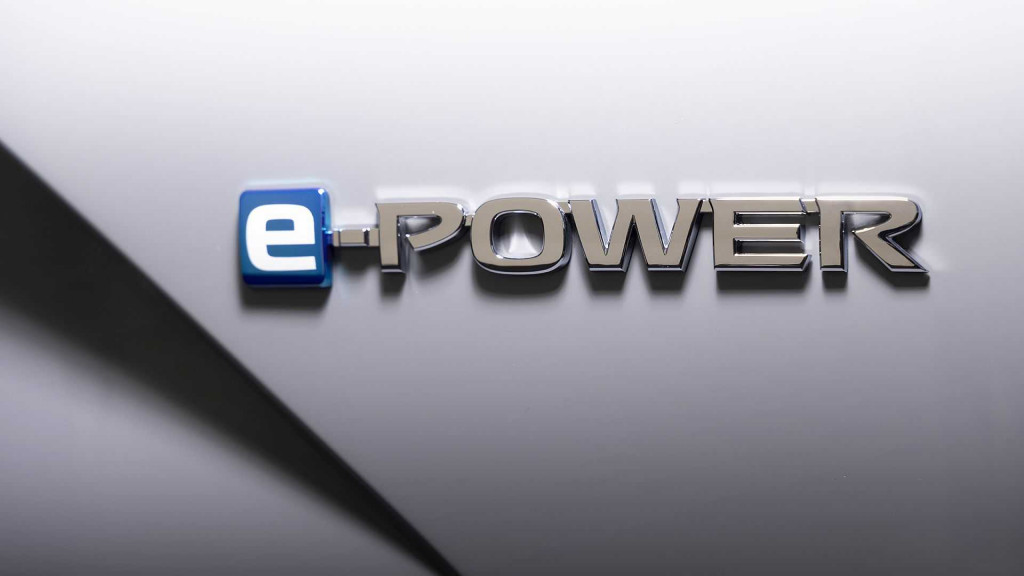
2022 Nissan Qashqai E-Power
But Espinosa continued to hint at how it might apply the technology in the United States
In order for e-power to make sense in a vehicle, Nissan would have to install a slightly larger combustion engine than would otherwise have been the case, he explained.
“And if you want to take it a step further, and I’m just talking about engineering, you could theoretically put a direct coupling between the engine and the wheels, so at high speed you don’t have the problem of draining energy from the battery and draining the battery .
“There are several approaches we can think of for e-power… there are many possibilities,” he summarized.
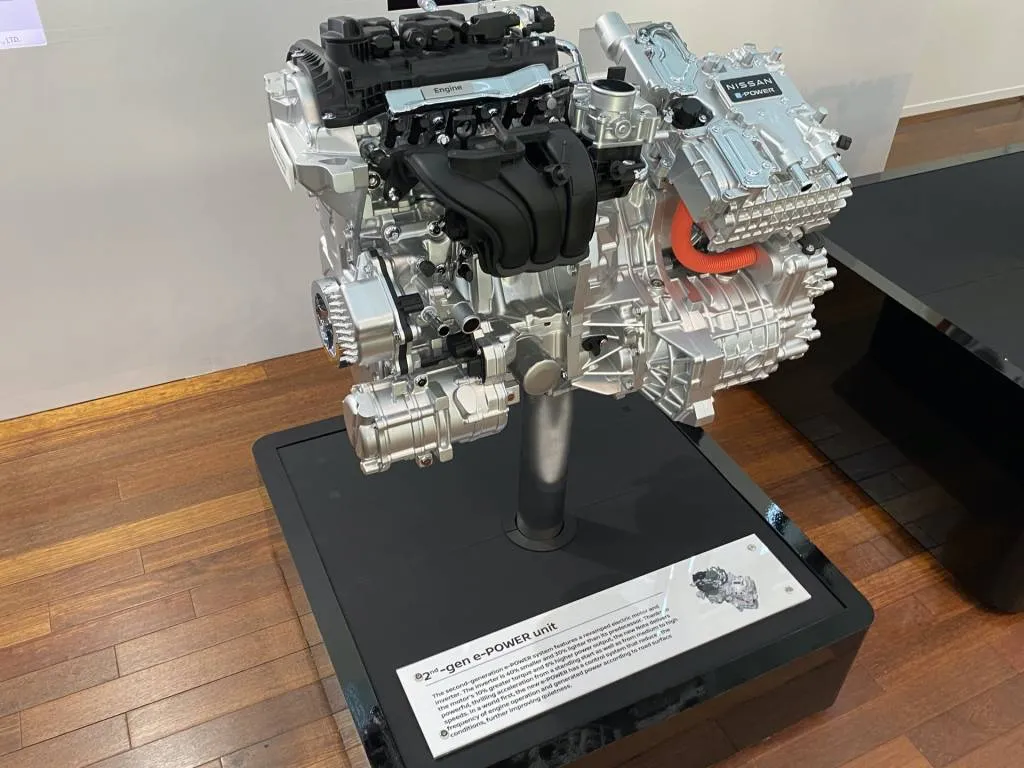
Nissan 2nd generation e-Power hybrid system
To make series hybrids work for America
What Espinosa suggested is very close to the arrangement of Honda’s two-mode hybrid system that it is now being installed on a large scale in US models, including the Accord and CR-V and soon the Civic. In these Honda hybrids, the engine is connected to the drive wheels in a very large gear ratio for light driving, but otherwise they function like series hybrids with the engine as a generator.
Nissan told Green Car Reports in January 2019 that the e-Power series hybrid, if launched in the U.S., would come as more of a performance option; Now it says any arrival in the US would be in “large proportions”. Putting the pieces together, it could potentially be released in the US as a step-up powertrain for the Rogue, Nissan’s current best-seller.
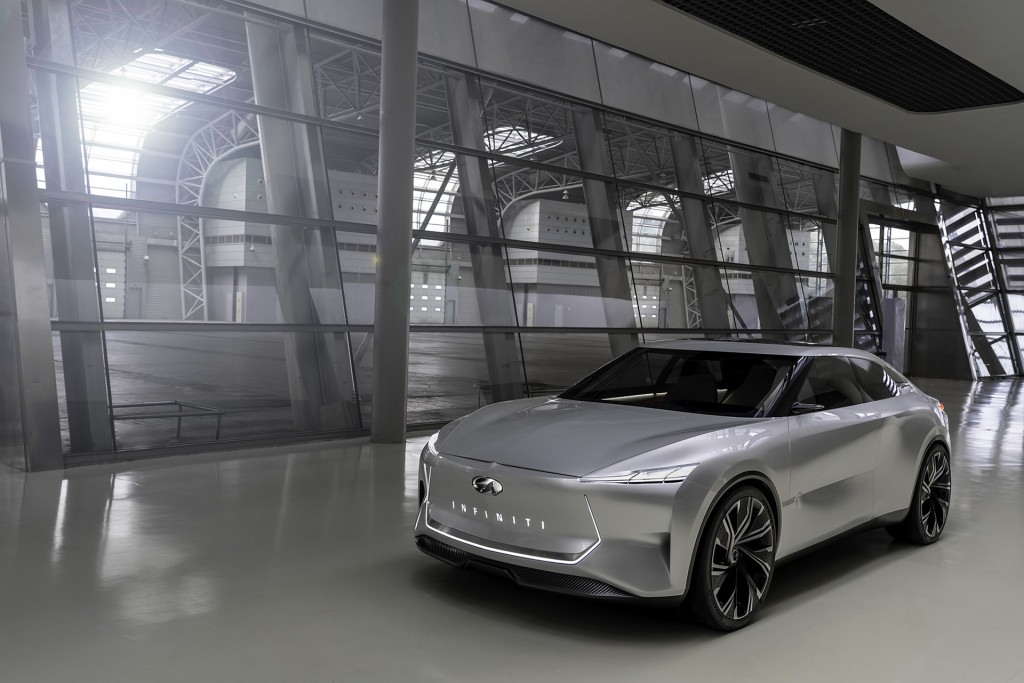
Infiniti Qs Inspiration concept
Although Nissan hasn’t yet confirmed e-Power for the US, its luxury brand Infiniti has already done so – and reversed course. It was part of a short-lived relaunch of the brand planned in 2019, with a full launch planned Electric and hybrid luxury vehicles with Infiniti’s own version of e-Power at its core. Specifications released by Infiniti included a 1.5-liter turbo-3 that was part of Nissan’s VC (variable compression) engine family, as well as battery packs ranging from 3.5 to 5.1 kWh – larger than typical for hybrid vehicles.
Increasing the size of the engine and generator – and introducing a parallel hybrid mode for the highway – may also have been a lesson in American driving conditions to dampen cabin noise and increase efficiency on the highway. After all, that’s exactly what GM did with its Voltec system in the Chevy Volt, which was primarily a series hybrid.
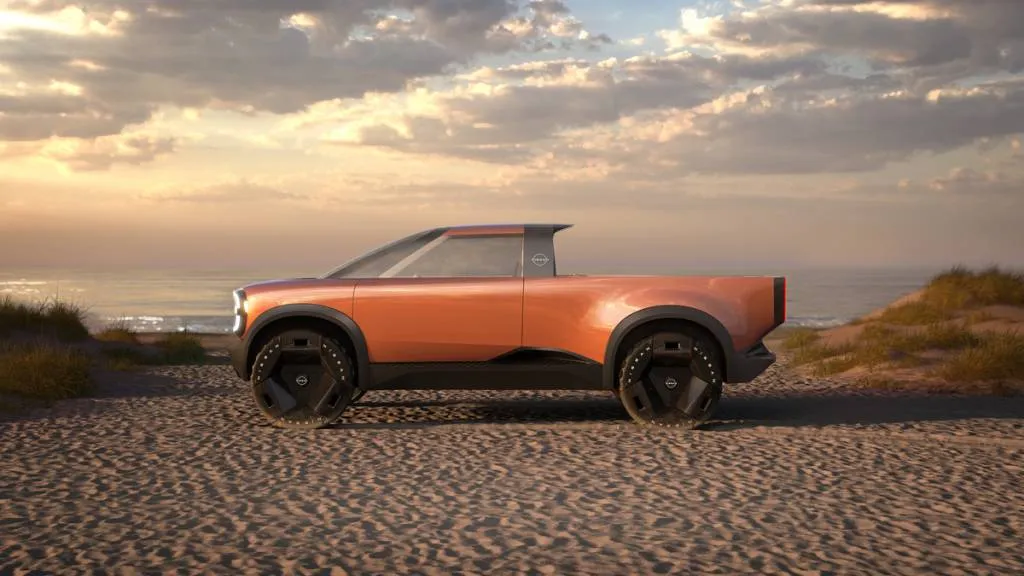
Nissan Surf-Out Concept (2021)
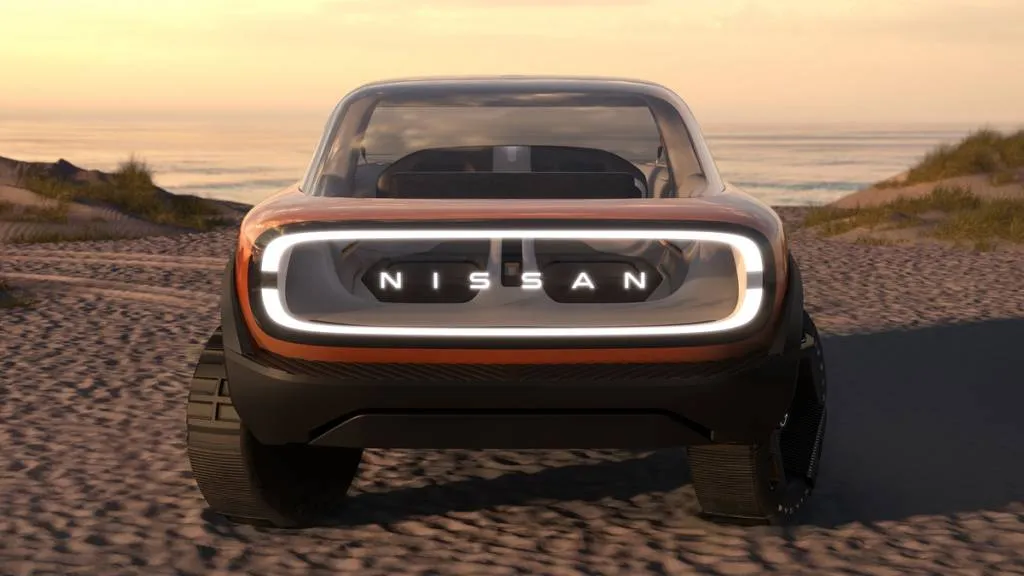
Nissan Surf-Out Concept (2021)
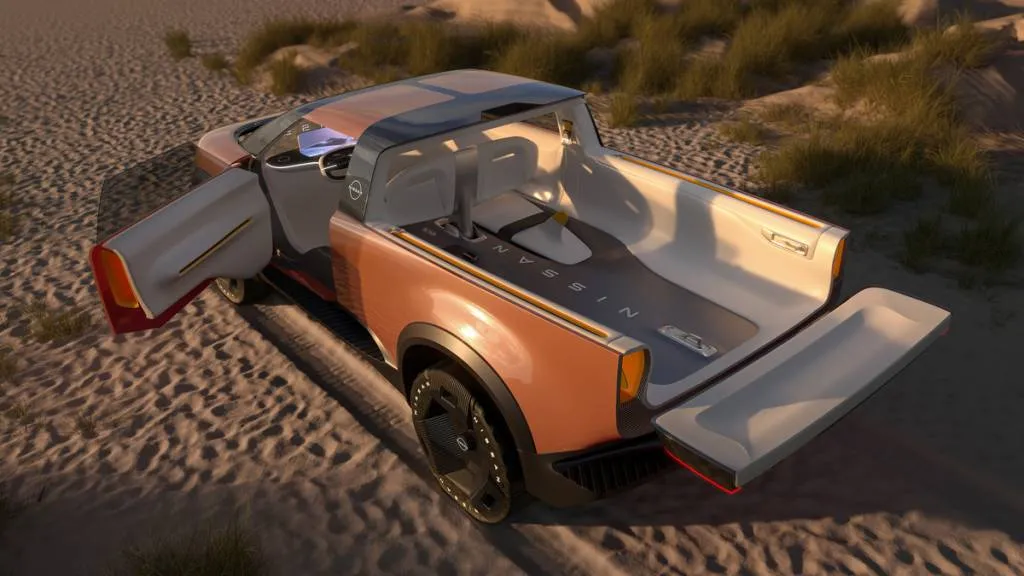
Nissan Surf-Out Concept (2021)
E-Power or EV for a compact pickup?
Meanwhile, loudly Automotive NewsNissan is also reportedly exploring the idea of transferring e-power directly to an all-electric truck – specifically a compact electric truck priced around $40,000. Such a product could be based on the alliance with Mitsubishi and Renault.
In March, Mitsubishi announced a potential offer Electric compact truck on its way to the USA this could potentially fit into the Nissan lineup below the Frontier. Nissan has reportedly thought about it themselves compact EV pickupand in November 2021 it showed that Max-Out electric truck concept.

Nissan Hyper Tourer concept
The solid-state wildcard
Nissan has another technology wildcard: this is it Solid state batteries could become a viable option later in the decade. The automaker argues that they make most sense in larger SUVs, pickups or vans because they pack more energy into a smaller space, with faster charging and with lower costs and potentially a smaller environmental footprint. And in general, in the meantime, the company plans to initially make some of its larger vehicles fully electric – like the larger, all-electric Nissan Maxima Replacement is scheduled to take place in 2025.
“We’re obviously thinking about electrifying many, many segments,” Espinosa said. “We’re looking at speed here; The key is to ride the wave at the right moment, because each segment moves at different speeds.”
Regulation is the other factor. Nissan has a longer road to electrifying its vehicles in the US and aims to sell 40% electric vehicles there by 2030. With 55% of global sales electrified by that point, E-Power vehicles are expected to be a significant part of the US lineup.
Could Nissan catch up with Toyota and Honda in hybrids? If Nissan takes advantage of modular technology while moving to all-electric vehicles with midsize and full-size models for the U.S., it may still be possible – with Nissan splitting the difference with hybrid small cars and pickups, as well as two very different builds of this signature technology .
